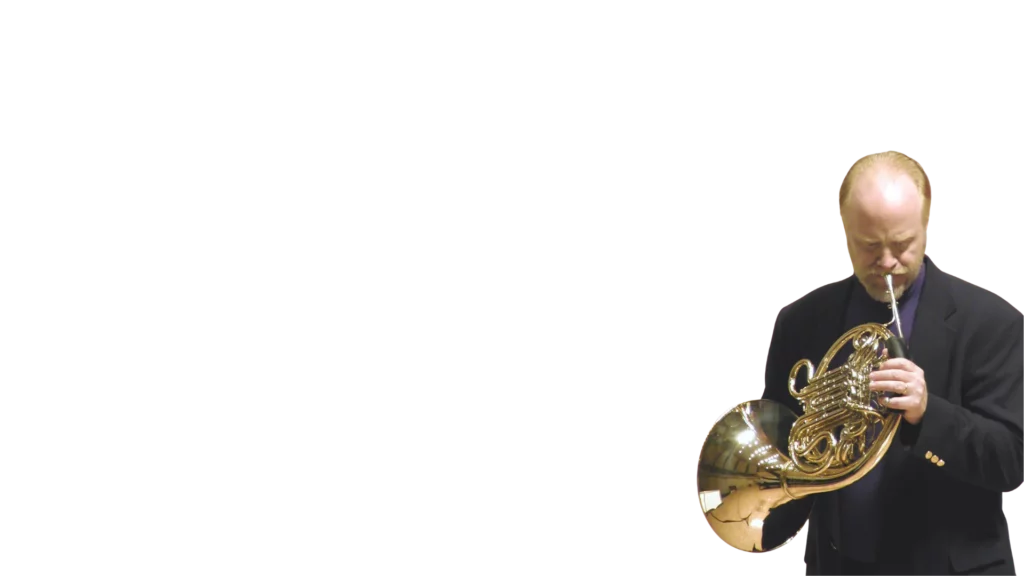“September Elegy” arose as an expression of grief from the events of September 11, 2001, and is unusual in that it uses a natural (valveless)horn in Eb, and that the performer improvises on it. Natural horn has seen something of a revival in use over the past decade or so, but its use has been almost entirely in its original classical setting. Since beginning to work with the natural horn over a year ago, I have become very impressed with its powerful expressive capabilities, which can be used to surprising advantage in playing contemporary music. For example, the range of tone colors, the use of stopped and half-stopped hand positions (including portamento effects) is much more vivid than that possible on the modern valved horn. The natural horn is also capable of extraordinary crescendos and decrescendos that can be startling and dramatic.
Add to this extended spectrum of expression the element of improvisation – completely unknown on the horn since Punto ad libbed classical cadenzas in the early 1800s – and you have a very unusual musical adventure, and one that will be different for every performance. Improvisation is usually thought of as being either ‘free’ or jazz in style. The improvisation required here (for both instruments) is neither. Jazz improvisation commonly follows a cyclic harmony. September Elegy’s improvisation is primarily guided by the mood of the piece. Where ‘free’ improvisation often incorporates extended techniques (or may consist almost entirely of them) and may sound chaotic, the goal of the performers here is to improvise in the original sense of composing on the spot in the mood of the piece. Improvisation in this sense has both unity and variety, both stucture and surprise, activity and repose.
There are four sections to September Elegy: I. Prologue II. Chorale III. Reflection IV. Epilogue. All but the Chorale are improvised (Reflection is a piano solo). Some horn players may shy at the unfamiliar requirement of improvisation. The barrier to performance is not improvisation per se. The improvisation appropriate to the piece is not necessarily technically difficult; on the contrary, a slow and expressive improvisation suits the mood of the piece. The real barrier is in the mind of the player – daring to improvise, daring to express inner feelings, daring to explore and discover the music inside him or herself. Although the use of the natural horn is much preferable, there is also no reason that the piece could not be realized on a modern horn if that is the only instrument available. The valve horn performer should, however, be aware of how hand horn techniques color the sound. Preparation for performance should involve exploration of all basic and extended (e.g. fluttertongue, trills, glissando, extreme ranges, stopped and echo effects, portamento, use of the 7th, 11th, 13th harmonics, and so on) techniques of which the natural horn is capable.
Length of the movements: this is up to the performers. The first performance (University of Iowa, November 30, 2001) was about 10 minutes long altogether. Rough suggestions: Prologue – up to 2’; Reflection – 1’ 30” to 2’; Epilogue: 20-30”.
I would like to express my deep gratitude to pianist Evan Mazunik, whose remarkable playing and insightful comments were an invaluable source of inspiration in the creation of this work.
September Elegy is one of a series of pieces that blend nonidiomatic improvisation with written material. Up until the rise of gigantic Romantic orchestras, horn players were expected to be able to improvise, like all musicians. I hope that this series will help bring back the skill and the joy of improvisation to the players of this instrument.
Postscript: Jeffrey Snedeker performs this piece on his CD “The Contemporary Natural Horn” (2011)
